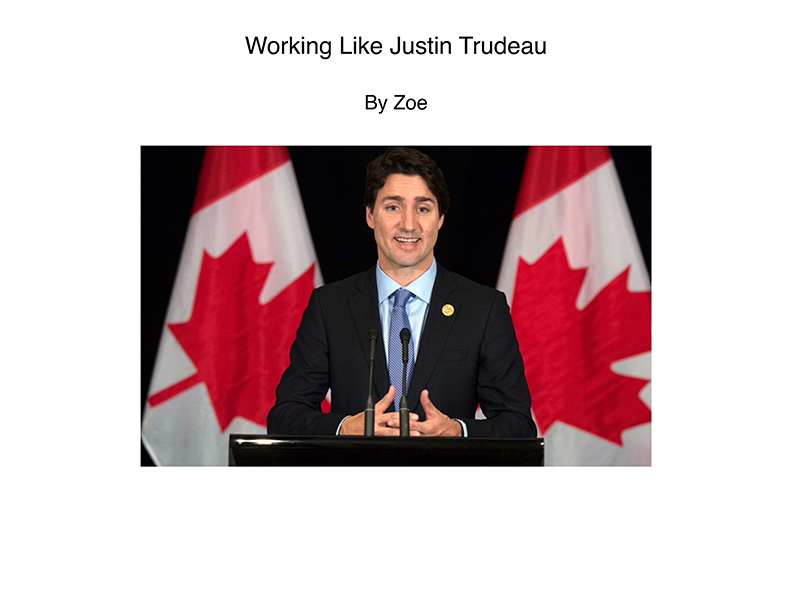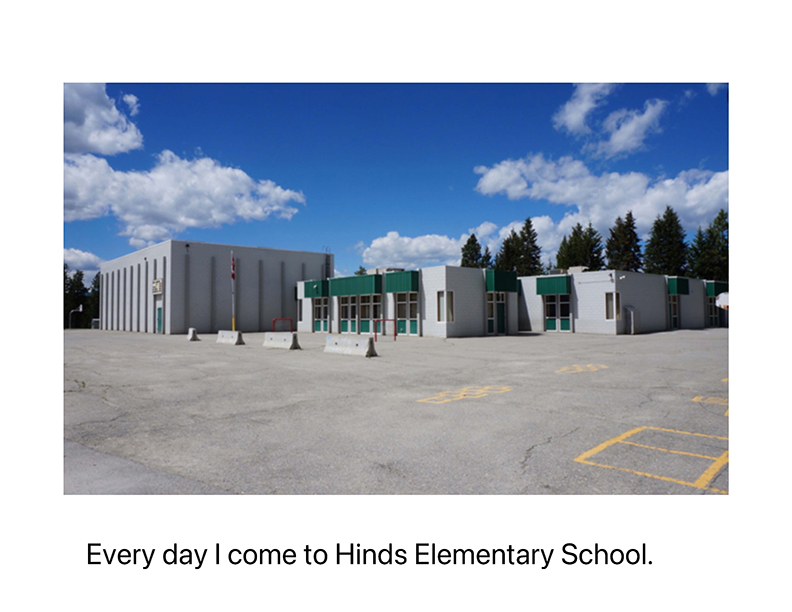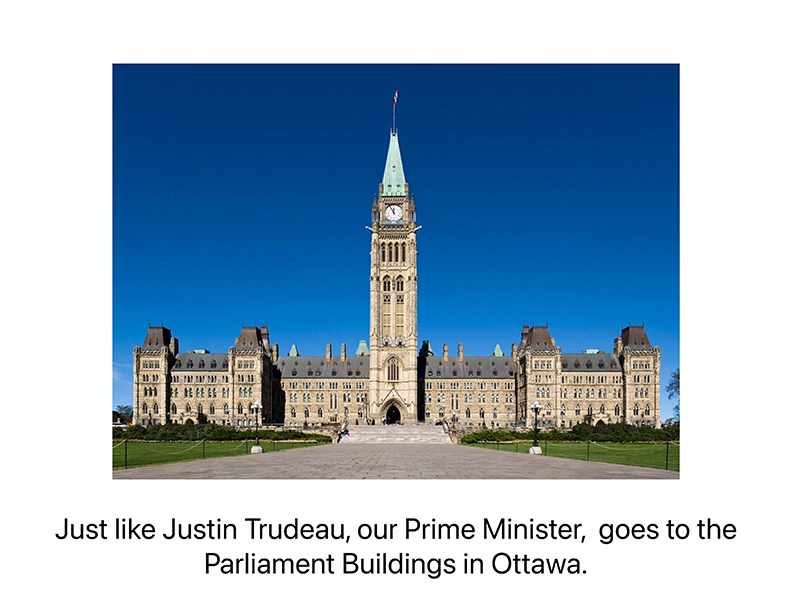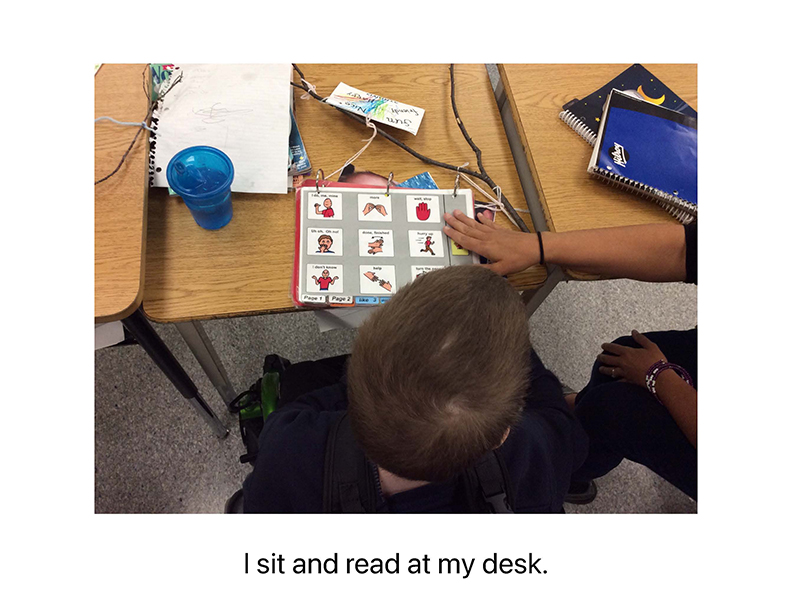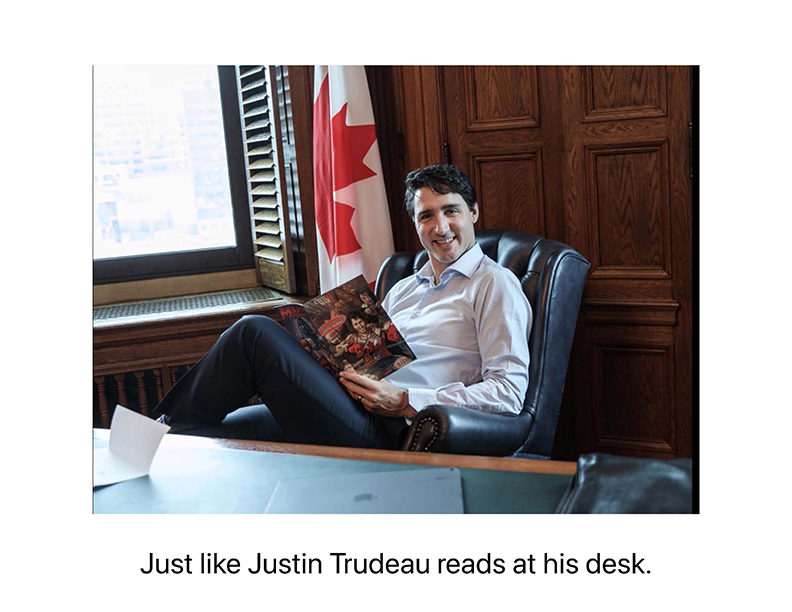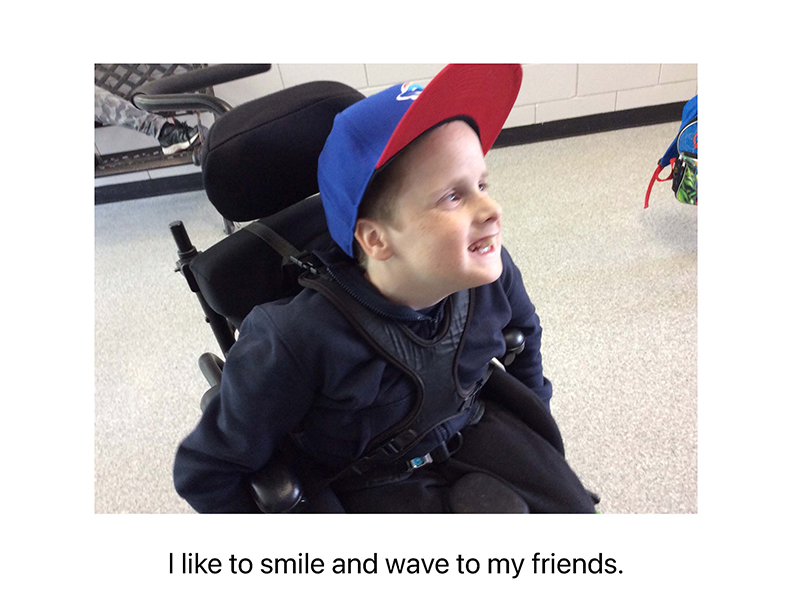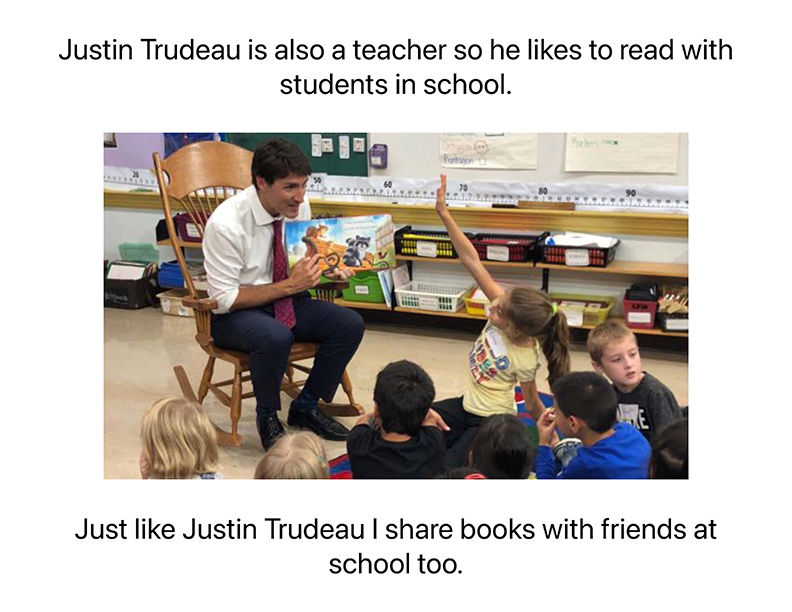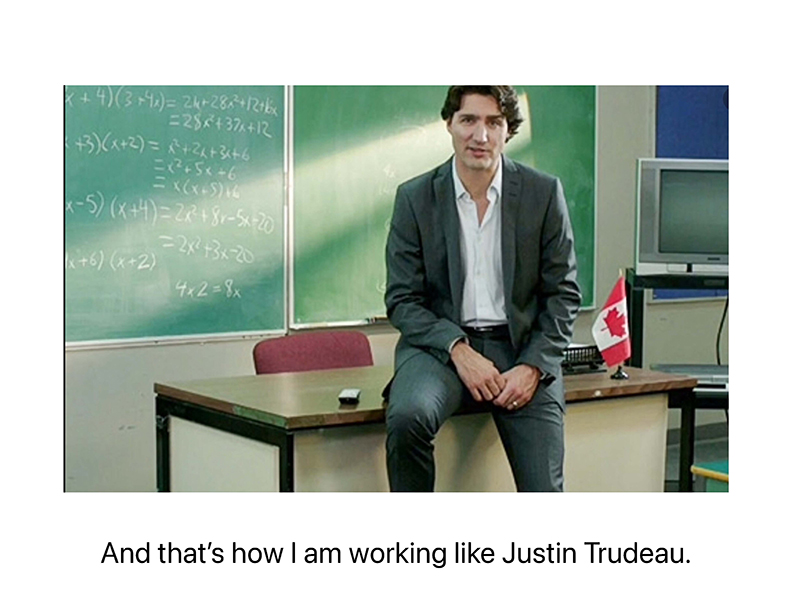Module 2: The B.C. Curriculum and Students with Complex Needs
Opportunities for Practice: Curriculum
Using the Big Ideas and Essential Concepts allows you to identify opportunities for meaningful learning activities for your student. Remember that students with complex needs should have whatever support is needed to be included. This might look like working with a peer, being part of a group, taking on a specific role, or doing one step in the activity. Your interdisciplinary team will be able to help you with ideas for inclusive practice.
Science is a terrific content area for fostering inclusion as it lends itself naturally to learning activities that require “doing.” Group projects, research projects, experiments, and inquiry are common. How could your student be included in these learning activities?

Case Example: Grade 2 Science
Micah is a student in Grade 2 with complex needs. They are motivated to learn and enjoy interactions with classmates. Micah’s IEP objectives include learning to use an iPad as a communication tool and learning to use a switch to have more active participation in classroom activities.
Read the Grade 2 Science curriculum.
Use a Big Idea that your whole class is working on at their current grade level. Next, within the Big Idea identify the Essential Concept to determine what is relevant and meaningful to your student with complex needs. For example, when you distill down “forces influence the motion of an object,” the essential concept can be “things move.” Use this to guide the learning activities for your student.
Ideas for Learning Activities
| Big Idea | Essential Concept | Learning Activity |
|---|---|---|
| Living things have life cycles adapted to their environment | How do animal babies compare to their parents? | Using Tar Heel Reader to access content specific books on animal offspring and their parents |
| Materials can be changed through physical and chemical processes | How can you make a physical change? | Physical change can be explored using a blender to make smoothies to be shared with peers or an adult in the school |
| Forces influence the motion of an object | Movement—things move | Movement can be taught in a variety of settings using objects or having your student move their bodies |
| Water is essential to all living things, and it cycles through the environment | All living things need water | Learning that all living things need water can be built into a community role for your student, such as watering plants in the classroom and school, or participating in maintaining a school garden or greenspace. You could further explore what happens when we do not give plants water |

Opportunity for Practice: Learning Activities
Example: Grade 5 English Language Arts
Sophie uses a variety of facial expressions and gestures to communicate. An IEP goal is to enhance their expressive communication repertoire using no tech, low tech, and AAC to access age-appropriate literacy activities.
Read the Grade 5 ELA curriculum.
Using the case example as a guideline, think about which learning activity would fit best with each Big Idea/Essential Concept set shown in the table.
Learning Activities
- Create a story using PowerPoint for “I can tell a story about myself.” While some technology can initially require support and a bit of practice, many educators are already comfortable using PowerPoint. It can be very user friendly, allowing you to take photos, put them on a slide and add audio if desired. You can also make PowerPoint switch accessible (if needed), so your student can turn the pages, giving them an active role in telling their story
- Reading for pleasure can be achieved through exposure to a variety of age-appropriate texts. Consider your students’ interests. Having students respond with “I liked it” or “I didn’t like it” is a way to include them. Both Pictello and Tar Heel Reader can be used to read and tell/make stories. There are many options for clear and simple sentences with repeated phrases
- The essential concept, “I can communicate in various ways,” opens the door to your student using any form of communication. Your student can use their body to communicate ideas such as nodding their head for yes or no, waving hello and goodbye, or smiling in a greeting. They can communicate their choice by reaching for their choice, looking at their choice, or using a communication book or app. Another idea is to text using Touch Chat to contact their parent
Ideas for Learning Activities
| Big Idea | Essential Concept | Learning Activity |
|---|---|---|
| Language and text can be a source of creativity and joy. | Reading for pleasure. | Reading for pleasure can be achieved through exposure to a variety of age-appropriate texts. Consider your students’ interests. Having students respond with “I liked it” or “I didn’t like it” is a way to include them. Both Pictello and Tar Heel Reader can be used to read and tell/make stories. There are many options for clear and simple sentences with repeated phrases. |
| Exploring stories and other texts helps us understand ourselves and make connections to others and to the world. | I can tell a story about myself. | Create a story using PowerPoint for “I can tell a story about myself.” While some technology can initially require support and a bit of practice, many educators are already comfortable using PowerPoint. It can be very user friendly, allowing you to take photos, put them on a slide, and add audio if desired. You can also make PowerPoint switch accessible (if needed), so your student can turn the pages, giving them an active role in telling their story. |
| Using language in creative and playful ways helps us understand how language works. | I can communicate in various ways. | The essential concept, “I can communicate in various ways,” opens the door to your student using any form of communication. Your student can use their body to communicate ideas such as nodding their head for yes or no, waving hello and goodbye, or smiling in a greeting. They can communicate their choice by reaching for their choice, looking at their choice, or using a communication book or app. Another idea is to text using Touch Chat to contact their parent. |
One example of the learning activity “telling a story about yourself” created in PowerPoint is about working like Justin Trudeau. Each slide has a picture and a simple sentence telling us what is happening. A story like this can be created easily and takes very little time.
For more examples like this and other learning ideas, visit Inclusion Outreach website and click on Curriculum & Strategies.

Opportunity for Practice: Essential Concepts and Learning Activities
Example: Grade 8 Science
Ben is learning to use eye gaze technology to participate in academic activities. He works with a small group of students in science and contributes by accessing information on the internet on the topic being studied.
Read the Grade 8 Science curriculum.
Using the case example as a guideline, think about which Essential Concept and learning activity would fit best with each Big Idea set shown in the table.
Essential Concepts
- Living things grow and reproduce.
- The Earth’s surface is always changing (e.g., volcanoes).
- What are the properties and behaviours of light?
Learning Activities
- For a student with complex needs, the essential concept might need to be broken down to a singular concept, such as “Light can be on. Light can be off” They might explore different ways that light can be on or off, and experiment with ways to turn light on and off (candle, flashlight, ceiling light, lamp).
- The study of earth science could include building a volcano as a project with a group or a peer, and having it erupt.
- To learn that living things grow and reproduce could involve growing plants from seeds. This would include learning that living things need nutrients to stay alive.
Ideas for Learning Activities
| Big Idea | Essential Concept | Learning Activity |
|---|---|---|
| Life processes are performed at the cellular level. | Living things grow and reproduce | To learn that living things grow and reproduce could involve growing plants from seeds. This would include learning that living things need nutrients to stay alive |
| Energy can be transferred as both a particle and a wave. | What are the properties and behaviours of light? | For a student with complex needs, the essential concept might need to be broken down to a singular concept, such as “Light can be on. Light can be off”. They might explore different ways that light can be on or off, and experiment with ways to turn light on and off (candle, flashlight, ceiling light, lamp) |
| The theory of plate tectonics is the unifying theory that explains Earth’s geological processes. | The Earth’s surface is always changing, (e.g., volcanoes) | The study of earth science could include building a volcano as a project with a group or a peer, and having it erupt |
